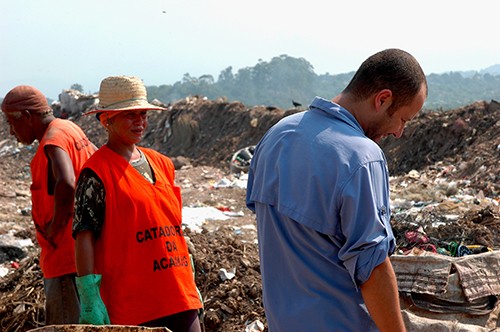It’s been called “”the ‘Slumdog Millionaire’ of documentaries.”” It’s been nominated for the Academy Awards’ Best Documentary Feature. It all takes place in a pile of trash.
“”Waste Land,”” now screening at The Loft Cinema, follows Brazilian-born contemporary artist Vik Muniz as he returns to his native country to pursue a daunting two-year project: constructing garbage portraits of recyclable-material “”pickers”” working in the world’s largest garbage dump.
The concept behind the undertaking is eloquent. In addition to creating beautiful art from disparate, dirty and yet relevant materials, Muniz also involves the depicted workers in his process, enlisting them to arrange the recyclable materials. The outcome is a handful of enlightened and forward-thinking pickers, proud of a Marat-inspired portrait and richer for the $50,000 it fetches them at auction.
But where the project is powerful, the film is less so. It relies entirely upon the relative impressiveness and generosity of Muniz’s endeavor and exploits all available beauty. From the workers selected to the color saturation of the on-screen trash, each choice seems made with the audience, rather than the truth, in mind. The result is a portrayal concerned with the humanity of its subjects on the one hand, but not taking them as they are on the other. Worse, the entire film reads as a PR piece — one might marvel through the vivid, sunshine-y 98 minutes and never guess anyone but Muniz was behind its creation, though Lucy Walker is listed as director.
Still, too bad there’s no Academy Award for Coolest Philanthropic Art Project.









